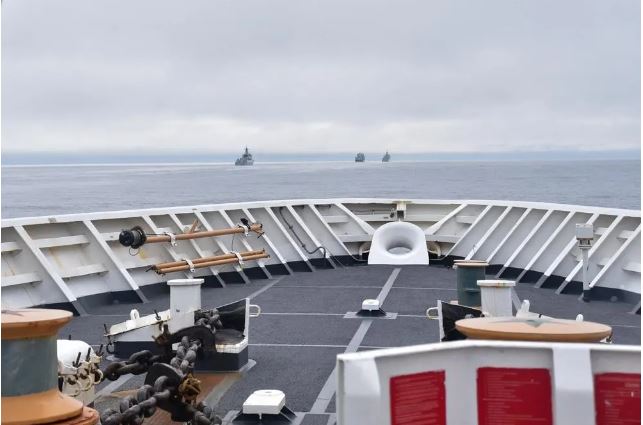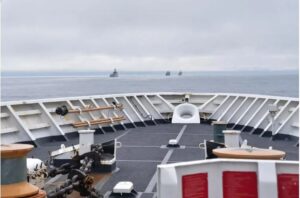Alaska’s Maritime Confrontation Sparks Concern Amidst Muted Pentagon Response


In a synchronized media briefing, Alaska’s two senators unveiled startling details of an August maritime encounter near the Aleutian Islands. They reported that eleven naval combatants from Russia and China, closely shadowed by four U.S. destroyers and a P-8 Orion maritime patrol aircraft, journeyed near the region. The Pentagon, when probed about the event, remained tight-lipped, providing minimal clarity.
While such incursions near Alaska have been overlooked in the past, this recent naval activity prompted an uncharacteristically vigorous Pentagon response. However, this heightened alert contrasts with the ongoing challenge faced by the U.S. military in the Pacific to seamlessly bridge the gap between raw military might, strategic planning, and effective civilian communication.
Historically, the Pentagon has maintained a reserved stance on discussing operations. Yet, this instance was peculiar, as they declined to disclose any details about the navigational path the combined Chinese and Russian fleet pursued near Alaska. This level of secrecy not only raised eyebrows, casting doubt on the senators’ revelations, but also stood in stark contrast to practices by other U.S. allies such as Taiwan and Japan. These nations frequently share maps and general data regarding Chinese and Russian maritime activities with the media, sometimes even using social media platforms to showcase the locations of foreign military units.
Notably, the Pentagon overlooked an opportunity to underscore the collaborative efforts of Pacific allies in this matter. Japanese forces had identified parts of the extensive fleet before its trajectory towards Alaskan waters. The U.S.’s reluctance to acknowledge its ally’s significant role in tracking the Russo-Chinese fleet missed a chance to spotlight the cohesive support Pacific democracies can provide to one another.
Further deepening the information void, when the Pentagon was approached for more details, they directed inquiries to the U.S. Northern Command, which subsequently did not immediately address the glaring gaps in information.





